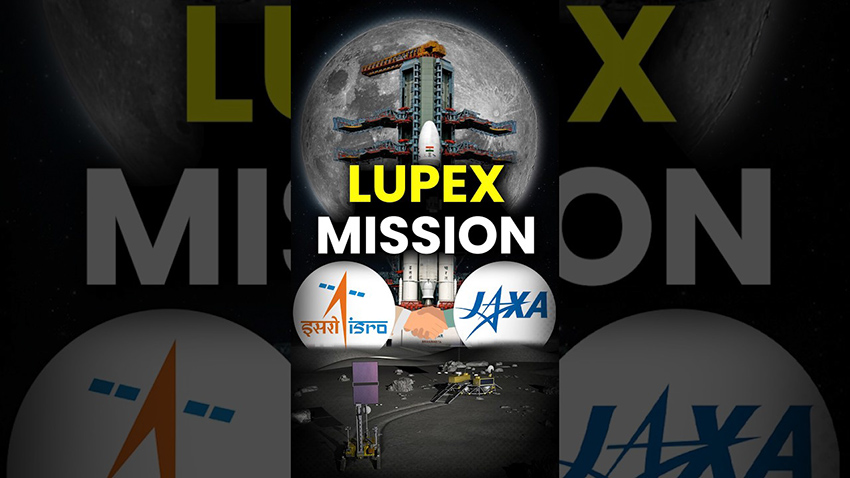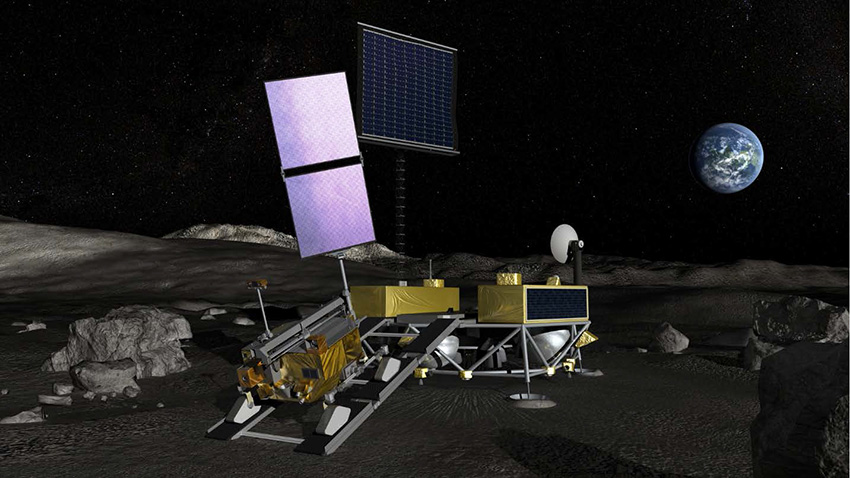Researchers narrow in on potential landing sites for the LUPEX mission undertaken by ISRO in Collaboration with JAXA
By R. Anil Kumar
-
The landing zones are evaluated based on amount of sunlight available, local topology, roughness of terrain, and potential science returns
-
The Indian Space Research Organisation (ISRO) is undertaking LUPEX mission in collaboration with the Japan Aerospace Exploration Agency (JAXA)
-
The LUPEX mission has an ISRO lander and a JAXA rover
-
The team who conducted the study are scientists from the Physical Research Laboratory in Ahmedabad, University of Kerala, Onshore Construction Pvt Ltd in Powai, Technical University Berlin, Indian Institute of Technology Gandhinagar, and the UR Rao Satellite Centre, Bengaluru
Bangalore, February 12. Researchers have narrowed down on potential landing sites for the LUPEX mission, close to the Shackleton crater at the south pole of the Moon. The landing zones were evaluated based on amount of sunlight available, local topology, roughness of terrain, and potential science returns. The landing zones are all close to permanently shadowed craters that may just contain water ice.

A team of scientists have carefully evaluated four potential landing zones for the Lunar Polar Exploration (LUPEX) mission, that the Indian Space Research Organisation (ISRO) is undertaking in collaboration with the Japan Aerospace Exploration Agency (JAXA).
The landing sites evaluated are between the Shackleton and the de Gerlache impact craters. These are craters very close to the south pole of the Moon. A number of future missions by space agencies around the world as well as private aerospace companies are headed to the highlands around the south pole of the Moon, particularly because of the permanently shadowed craters where water ice can exist close to the surface.
Four potential landing zones in the higher elevations between the Shackleton and de Gerlache craters were evaluated for their suitability towards the mission objectives. The LUPEX mission has an ISRO lander and a JAXA rover. Sunlight is an important consideration for selecting the suitability of the landing region, considering it is the only source of energy for the lander and the rover.
The rover will be capable of investigating the geology of the Moon, and of particular interest is material from the deep interior, that can shed light on long standing questions on the origin and formation of the Moon. Easy access to the permanently shadowed regions with the potential to contain water was also an important consideration. The researchers were able to narrow down on one promising site, which is relatively free of obstacles such as boulders and pits.

The team who conducted the study are scientists from the Physical Research Laboratory in Ahmedabad, University of Kerala, Onshore Construction Pvt Ltd in Powai, Technical University Berlin, Indian Institute of Technology Gandhinagar, and the UR Rao Satellite Centre, Bengaluru.
A paper describing the research has been selected for publication in Icarus. The purpose of the research was to primarily narrow down a potential landing site for the LUPEX mission. The regions evaluated though, also are partially overlapping with selected Artemis sites as well, and may be of benefit to NASA’s ambitious programme to return humans to the surface of the Moon.
About Lupex Mission
The Lunar Polar Exploration Mission (LUPEX) is a planned joint lunar mission by the Indian Space Research Organisation (ISRO) and Japan Aerospace Exploration Agency (JAXA). The mission would send an uncrewed lunar lander and rover to explore the south pole region of the Moon It is envisaged to explore the permanently shadowed regions on the Moon. JAXA is likely to provide the H3 launch vehicle and the rover, while ISRO would be providing the lander.
The Lunar Polar Exploration mission would demonstrate new surface exploration technologies related to vehicular transport and lunar night survival for sustainable lunar exploration in polar regions. For precision landing it would utilize a feature matching algorithm and navigational equipment derived from JAXA’s Smart Lander for Investigating Moon (SLIM) mission. The lander’s payload capacity would be 350 kg (770 lb) at minimum. The rover would carry multiple instruments by JAXA and ISRO including a drill to collect sub-surface samples from 1.5 m (4 ft 11 in) depth. Water prospecting and analysis are likely to be mission objectives.





